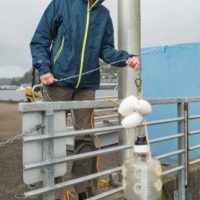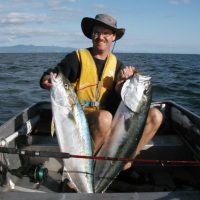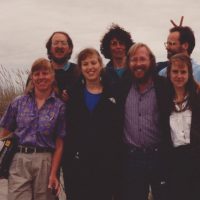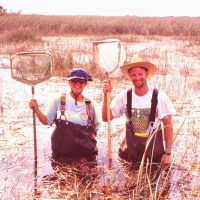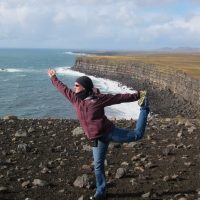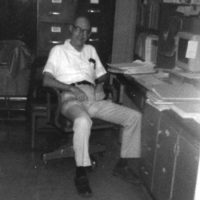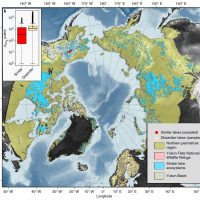Filter Results
Centennial Story 79: Jessica A. Miller (MS, 1993)
After completing a BS in Zoology at the University of Montana and working in Florida’s mangroves for a year, I was drawn to University of Washington’s School of Aquatic and Fisheries Science (SAFS) by its strengths in sound science and effective application. I entered SAFS in 1990 as an MS student. During a scoping visit the year before, I had been lucky enough to connect with Si Simenstad and learn more about his estuarine research and potential research opportunities.
Read moreCentennial Story 78: Richard (Rick) Methot (BS, 1975)
My path to, and back to, UW SAFS has taken a few turns. An impressionable high school sophomore in Massachusetts visited John Hughes at the Massachusetts State lobster hatchery and caught the aquaculture bug. Two years later, I was enrolled in the UW College of Fisheries. There I made ends meet by guiding tours of the salmon hatchery and keeping Frieda Taub’s continuous culture glassware ultra-clean while learning what fisheries was all about.
Read moreCentennial Story 77: John W. Meldrim (PhD, 1968)
Having a primary interest in fish behavior and ecology, I decided to come to the UW College of Fisheries in the fall of 1963 after earning a BA in biology from Occidental College (CA). Initially, my major professor was Alan DeLacy (MS, 1933; PhD, 1941), but in January 1964, I became Don McPhail’s research assistant and his student. Don introduced me to the Olympic mudminnow (Novumbra hubbsi) that month, and it became the subject of my thesis research.
Read moreCentennial Story 76: Mark Maunder (PhD, 1998)
Like the paths that many others have followed, my road to becoming a stock assessment scientist was a series of fortunate events. I spent much of my childhood recreational fishing, but never really had the goal of becoming a marine biologist, mainly because I was unaware the option existed. I moved from a little dairy farming community, where I grew up, to Auckland, the largest city in New Zealand, to do a Bachelor of Science with a double major in zoology and computer science.
Read moreCentennial Story 75: Greg Hood (PhD, 2000)
When I was a new graduate student at Florida State University (FSU) starting an MS on ant ecology, a post-doc told me to go somewhere else to get my PhD. Why? I asked. Had I made a mistake coming to FSU? Was there something wrong with this department? No, he just thought it was a good idea to spread your educational experience across more than one university, because each has a different academic culture, and you learn something different from each.
Read moreCentennial Story 74: Noble Hendrix (MS, 2000; PhD, 2003)
I grew up in Miami, Florida and was introduced to the world of marine biology and fisheries at a young age. Like many SAFS alumni, my introduction came with a rod and reel in hand. Most of my experiences were with my father and brother in search of whatever fish were biting during that time of year. Fast forward several years, I completed my undergraduate degree at Duke University, where I was an early admission to play soccer.
Read moreCentennial Story 73: Carwyn Hammond (MS, 2009)
Somewhere there is a picture of me about age 4, taken by my dad on a Staten Island beach in New York, standing at the water’s edge, arms in air, wind in my hair and butt naked! I think that is when I grew gills on the back of my neck and fell in love with the ocean.
Fast forward a “few” years, about a year and half after I finished my undergrad studies at University of Rhode Island (BS, 1999), and I was ready for a change.
Centennial Story 72: Bill Bayliff (MS, 1954; PhD, 1965)
I was accepted for graduate study at the UW during the summer of 1950. I had never been on the west coast of the US, but was immediately favourably impressed.
There were six professors at what was then called the School of Fisheries: Richard Van Cleve, head of the School, who taught population dynamics; Arthur Welander, who taught classification of fisheries; Allan DeLacy, who taught three courses, one per quarter in three subjects; James Lynch, who taught invertebrate zoology; and Lauren Donaldson, who taught three courses on various aspects of salmon culture.
Testing the impact of dam passage on homing success in salmon
Snake River salmonids are federally protected, but face a succession of dams to navigate from the ocean to the spawning grounds. The final dam in the sequence is the Lower Granite Dam. Ascending salmonids (sockeye salmon, steelhead, and Chinook salmon) all enter the fish ladders on the side of the dam, but some pass straight through and exit above the dam, while others are shunted off to one side and either released after a longer pathway, or held in tanks and sampled before being released to continue up the fish ladders.
Read moreArctic lakes play a smaller role in releasing ancient carbon than previously thought
The dry northern reaches of Earth contain nearly half of all of the carbon originating in living matter, mostly stored in the frozen soils of the permafrost. It has been long thought that warming in the Arctic will result in this carbon being released from the soil and activated again, through the many lakes that are prominent features of the Arctic.
Read more